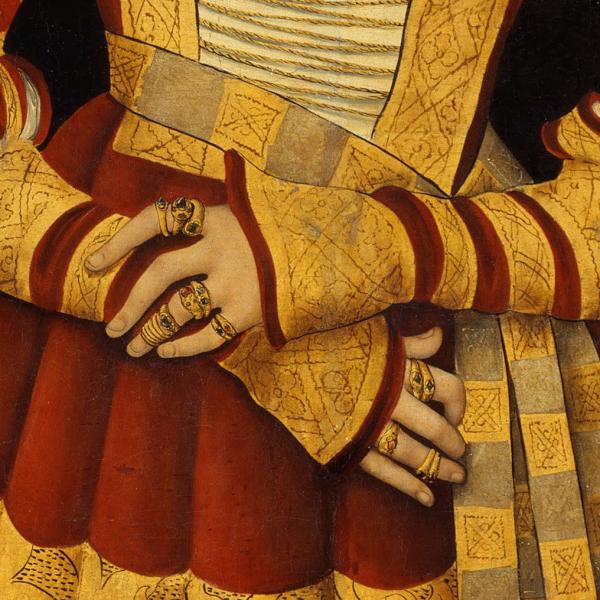Precious and everyday materials have long been used to craft finger-rings of gold, silver, bronze, glass, and carved stones like carnelian or lapis lazuli. But the most valuable finger-rings are made of gold. In the Ancient world the functional signet ring, inscribing the name or sign of the owner, developed alongside purely ornamental examples. The ritual ring, of religious and magical power or civic and state significance, survives as another type of finger-ring from Antiquity.
The evolution of the history of finger-rings in the Middle Ages and the Renaissance is extraordinarily rich. People at all levels of society wore rings and for many different reasons. It was common to wear more than one ring at a time on any finger of the hand, and to wear them sometimes over gloves. Whereas some rings now appear unusually small or exceptionally large to us, medieval paintings and sculpture of the period reveal they were worn on the upper joint of the finger as well as on the thumb, on chains around the neck, and even on cords suspended from hats.
Our selection of finger-rings groups examples from western Europe and Byzantium that range in dates from c. 300 A.D. to post-c. 1650 A.D in different categories: Ancient, Early Christian and Byzantine, Early Medieval, Gothic, Renaissance and Baroque, and later. From this chronological classification evolves a construction of the history of the art of rings following the lines of other more monumental media. Rings fulfilled many of the same functions throughout these different periods. From Antiquity through the Renaissance rings were exchanged by friends and lovers and sealed engagements and marriages; these rings are often inscribed with posies or black letter sayings. They were used as expressions of religious beliefs or, sometimes, to engage in acts of popular devotion. Rings made statements about social status, secured family ties, or served as legal authentication during an era of anonymity; these are nominative and signet rings. Rings provided a fertile field for craftsmen to exercise their virtuosity in forging, soldering, chasing, engraving, carving, and polishing. Quite simply they were also worn as fashion accessories.
